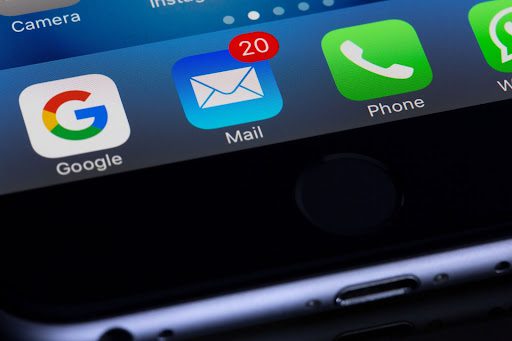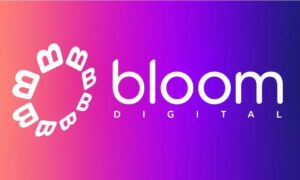In the fast changing landscape of modern business and networking, cold email outreach has evolved as a smart and effective way for beginning contacts, cultivating relationships, and unlocking new prospects. This is due to the rapid evolution of the modern business and networking landscape. A well-crafted cold email has the potential to cut through the noise of the digital world and make significant connections with people who you would not have been able to communicate with in the past. To become skilled in the art of cold email outreach, however, one must strike a delicate balance between strategy, originality, personalisation, and respect for the recipient’s time and preferences for how they want to be contacted.
Understanding Cold Email Outreach
The purpose of cold email outreach is to start communication with people who have not previously interacted with you or your business. Cold emails, as opposed to “warm” emails that are sent back and forth between parties who already have links, are sent with the intention of initiating new relationships, starting conversations, and opening doors that would have otherwise remained shut.
The Strategy Behind Successful Cold Email Outreach

1. Identify Your Target Audience
Finding out who you’re trying to reach through cold emails is the first step in building a solid foundation for your campaign. Determine the people or organizations that share your objectives and guiding principles and list them. In order to obtain the insights necessary to create your outreach plan, you will need to conduct in-depth research into their requirements, difficulties, and interests.
2. Craft a Compelling Value Proposition
A compelling value offer is the essential element that must be present in an effective cold email. Address the recipient’s concerns and fulfill their requirements. In what ways might their professional or personal lives be improved by utilizing your knowledge, products, or services? The tone for meaningful engagement is set when the value you contribute is articulated in a clear and concise manner.
3. Personalize, Personalize, Personalize
The key to a successful outreach strategy using cold emails is to personalize the messages. We have moved on from the days of sending out generic mass emails. Personalize each email to the receiver by taking into account their individual history, interests, and requirements. Mention current accomplishments, projects, or mutual connections to illustrate your sincere interest and show that you are paying attention.”The more personalized your emails are, the more likely they are to be opened and read. Use the recipient’s name, company, and any other relevant information in your email copy.” Says Ibad Hussain, Head of Marketing at Embedwiz
4. Craft an Engaging Subject Line
Your email’s subject line serves as the first impression recipients get of your message. A subject line that has been carefully developed should be succinct, fascinating, and relevant all at the same time. It need to pique the recipients’ interest and motivate them to read the email in order to find out more. It’s important to steer clear of clickbait and other false strategies since they might erode confidence.
5. Build Trust and Credibility
It is of the utmost importance to begin with a foundation of trust and credibility. Showcase your knowledge and credibility by discussing any relevant accomplishments, honors, or compliments you have received. By providing them with this information, you give recipients the confidence that interacting with you will be a productive use of their time.
6. Keep the Content Relevant and Concise
The main body of the email ought to contain information that is pertinent, succinct, and simple to process. In your email, emphasize the specific benefits that you can provide to readers, and provide a call to action (CTA) that explains what they should do next. Make use of bullet points or brief paragraphs to make the content easier to read.
7. Follow Up Strategically
When reaching out to people via cold email, persistence is a virtue; but, it must be matched with strategy. Maintain contact at regular intervals, and during each exchange, provide something of value to the recipient or further information. A timely and appropriate follow-up can rekindle interest, which can then lead to meaningful participation on the part of the recipient.
8. Respect Privacy and Regulations
Ensure that your use of cold emails complies with data protection and anti-spam rules such as the General Data Protection Regulation (GDPR) and CAN-SPAM. It is important to give recipients the choice to opt out of receiving additional communications if they are not interested in doing so.
The Creative Element: Crafting Compelling Cold Emails
1. Storytelling to Establish Connection
Make use of storytelling to establish an emotional connection with your audience. You should relate relatable tales, experiences, or difficulties to the person who will be receiving the message. Telling a story in your communication helps humanize it and makes what you say more remembered.
2. Visuals for Impact
Think about using visuals into your email, such as infographics, photographs, or videos that complement your content and make the email more visually appealing. Visuals have the ability to efficiently transmit complicated information and create an experience that is more immersive.
3. Unique Offerings or Insights
Make yourself stand out by providing the receiver with distinctive offerings or insights that excite their attention. This can include trends that are specific to the industry, access to exclusive materials, or participation in a webinar or event. Giving them something of value right off the bat is a certain way to get their attention.
4. Thoughtful Personalization
Do more than just address the recipient by their name. Make particular references to aspects of their past, recent accomplishments, or relationships that you both have. A thoughtful personalisation reveals that you have invested time and effort into comprehending the context of the situation.
The Pitfalls to Avoid
1. Overlooking Relevance
If you send unsolicited emails to someone that are unrelated to the recipient’s interests or requirements, it is possible that those emails may be disregarded or tagged as spam. Make sure that each email specifically addresses the problems they’re having or the goals they want to achieve.
2. Lack of Research
It is important to undertake extensive study before making initial contact to avoid making humiliating mistakes. Your credibility could be damaged if you misunderstand their job or if you reference inaccurate information.
3. Being Too Aggressive
Although it is important to be persistent, sending an excessive number of emails to recipients in a short period of time can be taken as an aggressive move. Follow-ups should be spaced out to respect both their time and their preferences.
4. Neglecting Follow-Up
After sending an initial email, skipping the follow-up steps can result in missed chances. Reigniting interest, prompting interaction, and reminding the receiver of your value proposition are all possible outcomes of a timely and strategic follow-up.
5. Disregarding Opt-Out Requests
If a recipient indicates that they are uninterested in receiving your mailings or want to be removed from your mailing list, you should comply with their request as soon as possible. Ignoring requests to unsubscribe can be damaging to your reputation and may even be against the law in some jurisdictions.
6. Costs and ROI Measurement:
“When running cold email campaigns, factor in costs like email service subscriptions, content creation, and lead generation tools. To measure ROI, track key metrics such as click-through rates, conversion rates, and customer acquisition costs. Calculating the lifetime value of acquired customers and comparing it to campaign expenses provides a comprehensive view of ROI.” Says George Smith, Marketing Manager at Infisim
Conclusion: The Art of Building Relationships
The practice of cold email outreach is not limited to merely facilitating transactional contact; rather, it is an art form that centers on the cultivation of relationships and connections. Reaching out to people via cold email successfully involves a combination of strategic preparation, personalisation, creative thinking, and respect for the preferences of the recipients. You have the power to launch impactful discussions, open doors that were once closed, and develop mutually beneficial collaborations that promote professional success when you grasp the subtleties of cold email marketing. To ensure that your unsolicited emails are welcomed additions to the inboxes of recipients, so enriching both their professional journeys and your own, it is necessary to master the art of striking the ideal balance between authenticity and strategy.



































